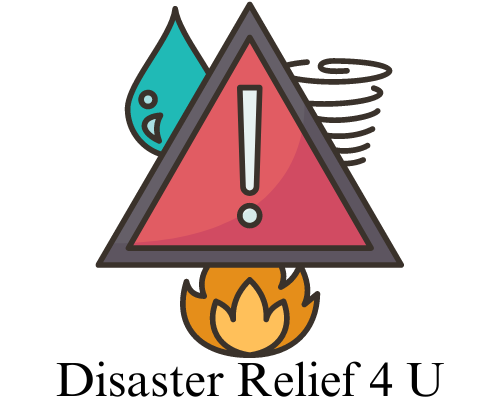Have you ever wondered about the looming threat of earthquakes and tsunamis in the Pacific Northwest? Let’s take a closer look at the Cascadia Subduction Zone and the recent discoveries that shed light on this hazard.

This image is property of sciencesprings.wordpress.com.
Understanding the Cascadia Subduction Zone
The Cascadia Subduction Zone is a region where the Juan de Fuca tectonic plate is subducting beneath the North American plate along the west coast of North America. This geologically active area runs approximately 1,000 kilometers from Northern California to Vancouver Island, Canada. The subduction zone is known for producing large, destructive earthquakes and tsunamis.
If you happen to be living in or visiting the area surrounding the Cascadia Subduction Zone, it’s essential to understand the potential risks and how to prepare for such natural disasters.
Implications of Recent Studies
Recent studies have provided new insights into the complex structures beneath the seafloor in the Cascadia Subduction Zone. By using advanced technology and conducting in-depth research, scientists have been able to map out the megathrust fault more accurately. This newfound knowledge has significant implications for understanding earthquake and tsunami hazards in the region.
New data suggests that certain segments of the megathrust fault may be more prone to larger earthquakes and tsunamis. This information is crucial for emergency management agencies and communities in the Pacific Northwest to enhance their preparedness efforts.
Key Findings on Megathrust Fault Segments
The megathrust fault in the Cascadia Subduction Zone is not a single continuous fault line but rather comprised of multiple segments. Each segment of the fault has the potential to rupture independently, impacting earthquake scenarios in different ways. Understanding the characteristics of these segments is vital for predicting earthquake behavior and assessing associated risks.
Segment Vulnerability
Certain segments of the megathrust fault are more vulnerable to larger earthquakes and tsunamis than others. By identifying these high-risk segments, scientists can prioritize monitoring efforts and develop targeted hazard mitigation strategies. It is crucial for residents and authorities in the Pacific Northwest to be aware of these vulnerabilities and take appropriate actions to ensure community safety.
Importance of Data Analysis
Analyzing data from seismic surveys, ocean floor mapping, and geological studies plays a critical role in assessing the potential impacts of earthquakes along the Cascadia Subduction Zone. By incorporating advanced modeling techniques and simulation tools, researchers can better understand the behavior of the fault system and make more accurate predictions about future seismic events.

This image is property of sciencesprings.wordpress.com.
Research and Preparedness Efforts
Ongoing research is focused on improving earthquake and tsunami hazard preparedness along the Cascadia Subduction Zone. By studying historical seismic events, conducting scenario-based simulations, and collaborating with local communities, scientists aim to enhance early warning systems and emergency response plans.
Community Engagement
Engaging with local communities is essential for raising awareness about earthquake and tsunami risks in the Pacific Northwest. Educational programs, outreach initiatives, and disaster preparedness drills help individuals and organizations understand the importance of being prepared for natural disasters. By working together, residents can build resilience and improve their ability to respond effectively in times of crisis.
Emergency Response Planning
Developing comprehensive emergency response plans is crucial for mitigating the impacts of earthquakes and tsunamis in the Cascadia Subduction Zone. By coordinating with government agencies, first responders, and other stakeholders, communities can establish communication networks, evacuation routes, and disaster recovery strategies. Preparedness measures, such as stockpiling emergency supplies and conducting evacuation drills, are key components of effective response planning.

This image is property of lamont.columbia.edu.
Future Directions in Hazard Assessment
Continued research and monitoring efforts are essential for advancing hazard assessment and risk mitigation strategies in the Cascadia Subduction Zone. By integrating multidisciplinary approaches, such as geophysics, seismology, and geodesy, scientists can gain a comprehensive understanding of the geological processes that drive seismic activity in the region.
Technological Innovations
Advancements in technology, such as seafloor sensors, GPS monitoring systems, and satellite imagery, are revolutionizing the way scientists study and monitor earthquake hazards in the Cascadia Subduction Zone. These innovations provide real-time data and enable researchers to detect subtle changes in the Earth’s crust that may indicate the potential for seismic events.
International Collaboration
Collaborating with international partners and neighboring countries is crucial for sharing knowledge, resources, and expertise in earthquake and tsunami research. By working together on cross-border initiatives, scientists can enhance their understanding of tectonic plate interactions and seismic risks that extend beyond national boundaries. International collaboration strengthens global efforts to improve disaster preparedness and response capabilities.
In conclusion, the Cascadia Subduction Zone poses a significant earthquake and tsunami hazard in the Pacific Northwest. Recent studies have provided valuable insights into the complex structures beneath the seafloor, highlighting the importance of understanding fault segmentation and vulnerability. Ongoing research and preparedness efforts are key to enhancing community resilience and reducing the impacts of natural disasters in the region. By staying informed, engaging with local authorities, and implementing effective response plans, you can help ensure the safety and well-being of yourself and those around you in the face of potential seismic events.

This image is property of bloximages.newyork1.vip.townnews.com.
